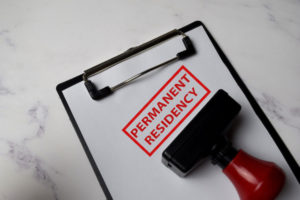From Laissez-Passer to Biometric Passports
Many conflicting stories float around about the actual origin of the concept of the passport. Britain and France come neck to neck in the invention of the concept. However, the word passport can be unequivocally credited to the French. Here at Shorex Capital we spend a lot of time discussing all aspects of citizenship with clients, but in today’s post I thought it would be intriguing to talk a little about what a passport actually is and why we have them.
Early days – France, Britain and the Kingdom of Judah
The first appearance of the word “passport” in English dates back to the beginning of the 16th century and comes from the Middle French “passeport”, which meant in those days “an authorisation to pass through a port”. The French word passeport dates back to 1420 under the reign of Louis XI and first appeared in Lyon as a certificate issued by the authorities for the free circulation of merchandise. In 1464, the notion was extended to people and the “passeport” became “a safe conduct issued by an authority guaranteeing the free circulation of a person”, close to the present notion of passport.
Prior to that, various types of travel documents had been issued, typically a letter from a monarch confirming the identity of a passenger or requesting safe passage to a destination. We all have seen movies where a rider shows up at a gate with a roll of parchment signed by whoever sent him. The first reference to this type of document is to be found in the bible – the Book of Nehemiah – where Persian king Artaxerxes grants safe passage to Nehemiah to return to Judah. This story took place in 445 B.C.
I think I have more stamps in my passport than most stamp collectors have in their collections.
John Rhys-Davies
As usual, Britain and France both claim to be the first country to have invented the concept. The earliest reference to a “safe conduct” document in Britain appears during the reign of Henry V, in an Act of Parliament dated 1414. The king could issue a “safe conduct” to anyone (“laissez-passer” in French), whether they were English or not. The monarch never had, nor needed, a safe conduct. It is true to this day; Queen Elisabeth does not have a passport.
In 1540, the king handed over to the Privy Council the granting of travelling documents, which for the first time became called passport.
In literature, one of the first appearances of the word passport is The St. Crispin’s Day speech from William Shakespeare’s play, Henry V, where King Henry says “Let him depart; his passport shall be made”. Ironically, the play refers to 25th October 1415, shortly before the Battle of Agincourt, and in those days the word passport didn’t exist. Even great writers sometimes get it wrong.
The earliest passport still in existence was issued on 18th June 1641 and signed by Charles I. From 1794, the Secretary of State issued all passports.
This trend was followed in Europe. In America, consular officials issued the first passports in 1775 at the beginning of the War of Independence.
Mid 19th Century: Passports are losing ground
In the name of “The Freedom of Movement” and as a direct result of the French revolution, passports were abolished in France at beginning of the 19th Century but were quickly reintroduced.
However, it is the industrial revolution that, for the first time, questioned the necessity of traveling documents. With the fast development of the rail network, tourism spread across Europe. So much pressure was put on the passport and visa system that France abolished passports and visas altogether in 1861. Other European countries followed suit and by 1914 passports were quasi eliminated across Europe.
First Word War: The return of the passport and the first photographic ID
These times of euphoria, trust and freedom did not last long and the outbreak of the First Word War revived fears of national security in all European countries. Passports and visas were immediately reintroduced, first as a temporary measure, but soon to become permanent.
Before the era of photography, one major problem with the passport was to establish an accurate physical description of the passport holder. The rapid progress of photography solved that last hurdle and the first passport to require a photograph was the British one in 1914.
Normalisation of Passports
The first set of international standards for passports appeared in 1920 at the “Paris Conference on Passports & Customs Formalities and Through Tickets”. During this conference, organised by the League of Nations, the 42 founding nations agreed on a set of standards for all passports issued by the members of the League. In 1926, The League of Nations organised in Geneva the Second International Passports Conference.
In 1947, the International Civil Aviation Organization (ICAO, which had 188 contracting states) took over the responsibility for setting passport standards. To this day, official standards regarding the quality, style and appearance of passports and photographs are set by the ICAO.
A collector’s item
Like many memorabilia, celebrity passports have attracted their fair share of interest. The 1931 US passport of Lou Gehrig, American’s famous baseball player, was the most expensive passport ever sold and grabbed $263,000 in a 2015 New Jersey auction, followed by Marilyn Monroe’s 1954 passport sold for $110,000.
Biometric passports and the evolution of passports
The trend for passports is to apply the latest technologies and increase the quantity of personal information on the holders, as well as use watertight identification and security features.
Biometric passports, introduced for the first time in 1998 by Malaysia, are now widely used and are replacing the old passports. From 2019, one cannot enter the United States without a biometric passport. By mid-2019, 150 countries were issuing biometric passports.
For now, biometric passports contain limited true biometric information, but the terminology clearly prepares travellers for what kind of information could soon be stored in their passport. Current biometric passports use contactless smart card technology, including a microprocessor chip and an embedded antenna.
As technology advances, national security increases and transparency become the new norm, there is no doubt that tomorrow’s passport will contain a reservoir of personal information on a worrying scale.




